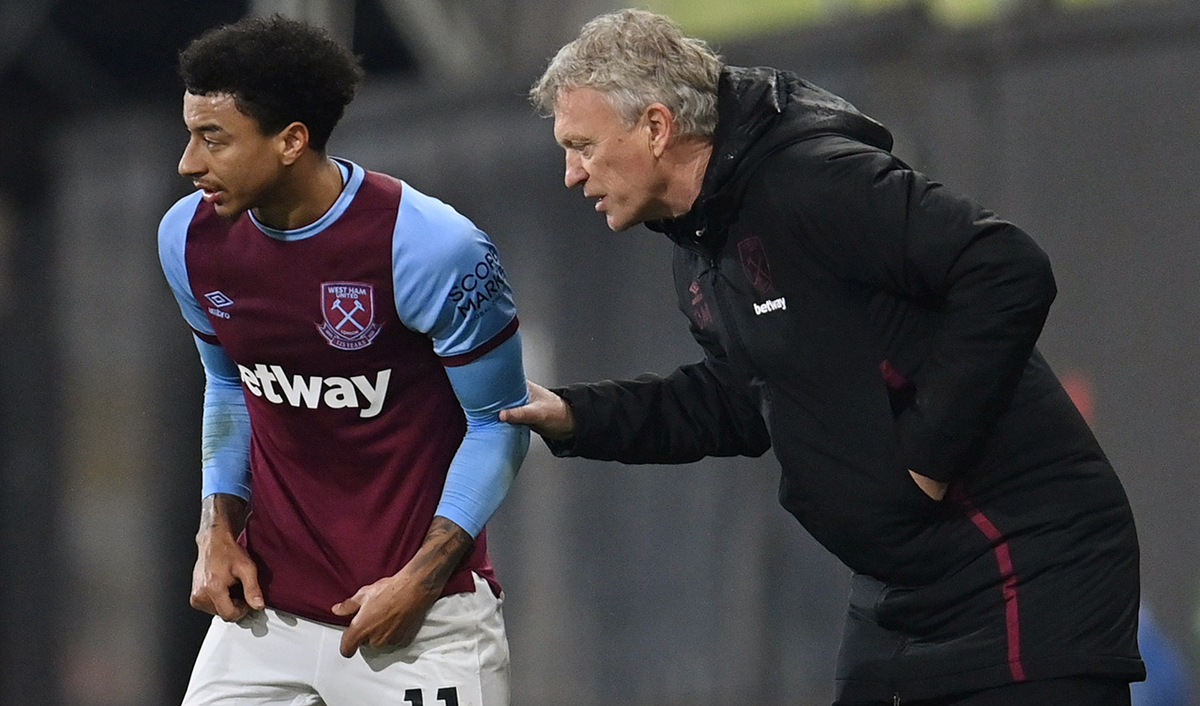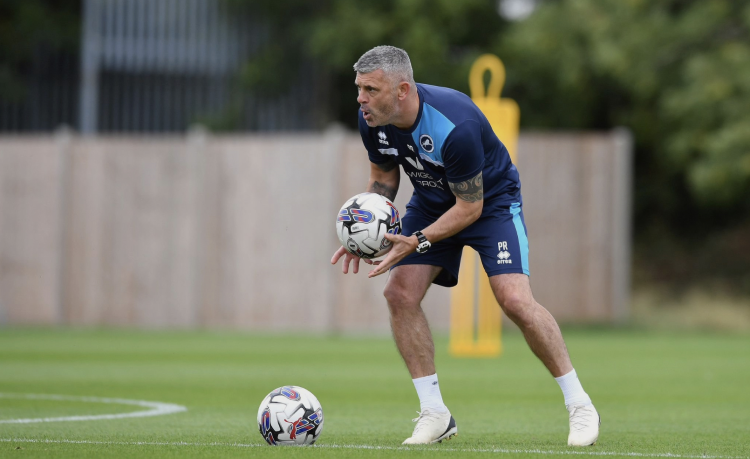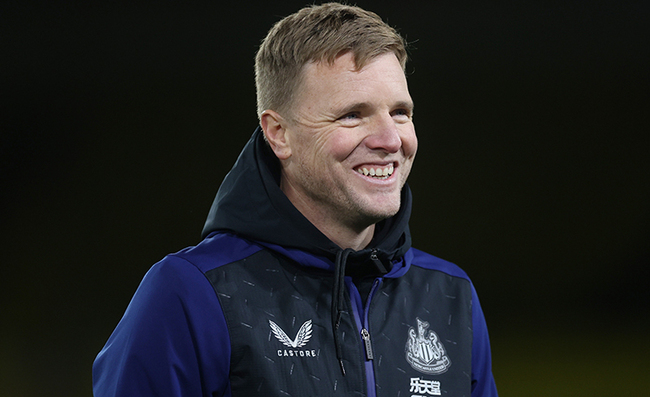You are viewing 1 of your 1 free articles
Building player confidence
Sport psychologist Dan Abrahams examines how to get players to build and sustain their levels of confidence
It was the legendary American soccer player Mia Hamm who said “Confidence takes constant nurturing. Like a bed, it must be remade every day.”
As a sport psychologist I have to agree. Confidence is an important performance ingredient, yet alarmingly fragile. When it’s present, it feels like a constant companion who’ll never leave your side and will always be there to help you. In contrast, when it’s lost, it feels like a stranger who you’ll never see again. Today’s feelings of confidence in training cannot be a guaranteed shoe-in for tomorrow’s game.
Confidence is so important. We want players to execute their actions positively. We want them to play with freedom rather than fear. And a lack of confidence can negatively impact other key mental aptitudes. Confidence mediates focus – without confidence players can easily succumb to distraction. Confidence sways the influence of emotion – with little confidence players can submit too easily to anxiety, worry and doubt.
Confidence affects how players execute their technique – reduced confidence can lead to a tight, tense player whose passes don’t meet their team mates, whose first touch is heavy, or whose tackles are mistimed. And confidence changes the speed and accuracy of the cognitive cycle – low confidence can lead to fewer search behaviours lessening awareness, slowing anticipation, and damaging decision making.
CONFIDENCE PLAN
With the above in mind, I often find myself asking players what they do to try to retain their sense of confidence. I’m regularly met with silence. Most players, in my experience, don’t have a confidence plan, a framework to help support that most delicate of psychological qualities.
Enter one of the world’s leading psychologists, Professor Albert Bandura. Now in his 90s, Bandura would be regarded by many in my profession as one
of the foremost thinkers in psychology over the past 100 years.
Some of Bandura’s extensive work revolved around a psychological construct called self-efficacy. In simple terms, self-efficacy can be translated as self-belief. There is some debate as to whether self-belief is the same thing as confidence, but for ease of understanding many sport psychologists nowadays use the two terms interchangeably, and we’ll do so in this article.
Though his studies and research, Bandura managed to demonstrate that self-belief is underpinned by four different sources. And you can use these sources to help players build their self-belief. Let’s go through them one by one…
Past experiences: Bandura’s work showed that the strongest mediator of confidence are past experiences. Translated to football, Bandura’s research suggests that the experiences of your players matter. This has enormous implications for you as a coach. You can help your players work on their confidence every day by reminding them of their best games, their best moments, their greatest strengths and their standout aptitudes. You can deliberately have players engage in activities that enable them to experience success (alongside the stretch activities you’re already setting them).
Your involvement in this confidence building process is crucial here because your feedback can help players take a granular viewpoint of their experiences. Players typically remember the bad moments rather than the good ones, and tend to resonate their weaknesses more so than strengths. By asking them questions that help them detail their successful performances, and by jolting their memory about their strengths, you can guide player confidence daily.
Vicarious experience: Bandura found that people can gain the confidence to accomplish a task by watching both themselves or someone else successfully complete the task they’re trying to accomplish. In other words, when you help players model their own behaviours, or the behaviours of someone else, you can increase their feelings of self-belief and confidence.
This can have implications for the way you utilise video analysis and subsequently feedback on footage. Understandably, individual player analysis is used from a deficit perspective – for example, providing players with footage of actions they can improve on. That has its place, but have you ever considered showing clips of strengths, assets, aptitudes and best moments in order to help players maintain confidence? Based on Bandura’s research, this might be a useful coaching practice to engage in.
Verbal persuasion: Bandura emphasised the importance of verbal persuasion on feelings of confidence. Individuals who are socially persuaded by coaches and team mates to believe they have the capabilities to achieve are more likely to exhibit greater effort and persistence, enhancing their performance. Positive feedback can help players build confidence.
Whilst hardly a revelation, it’s the nature of the verbal persuasion that counts. “You can do it” may suffice for surface level confidence, but a deeper and more meaningful confidence arises as a result of more specific feedback.
With that in mind, take time to report back to players the things they do well (and did well) that you feel they may have missed or might not be aware of. Better still, use a psychological tool like scaling to help players uncover their best moments. I’ve spoken about scaling before in this column, but to refresh your memory it goes like this…
Coach: “Give me a mark out of 10 for your last game”
Player: “Not great, perhaps a six!”
Coach: “Okay, why as high as a six – what did go well for you during the game?”
By using scaling you can help a player to reframe their game. Cutting away emotion, you can help them detect the moments of success that unfolded during a match. You can reflect back what they’ve uncovered and supplement through verbal persuasion…
Player: “My delivery was pretty good. I just wish someone had got on the end of one of the crosses”
Coach: “Okay, I hear you say that your crossing was strong. I agree – remember that brilliant whipped in cross in the first half? That’s you at your best. You had a few moments like that during the game. When you’re focused on finding the danger area you do so more often than not.”
Being ‘can-do’ with your coaching feedback goes beyond simply telling players they ‘can-do’. That’s so often a blunt communication tool. Verbal persuasion that packs a strong punch requires the subtle art of questioning and the power of affirmation to really give a player a sense of confidence.
Emotional and physiological experience: Bandura’s fourth source examines the relationship between inner feelings and confidence. Emotions such as anxiety and fear, when seen as unhelpful, can reduce confidence. Similarly, experiencing bodily sensations such as nerves or tense muscles can also diminish a person’s sense of confidence.
POSITIVE EMOTIONS
Thus coaches should strive to help players experience positive emotions (or at least emotions that players feel help them) and helpful bodily states prior to a performance. In my work, I’ve found at times that coaches are a little too quick to dismiss the influence positive emotions such as joy and fun can have on performance (often in favour of grit, determination and effort). I think confidence offers a neat half-way house here. By engaging in these types of positive emotions – sensations that are enjoyable to experience – players may feel increased confidence and high perform more often.
In my own practice with players, I’m constantly engaging them in a conversation that helps drive an inner narrative aligned with developing confidence. I want them to reflect on their best games (past experiences). I want them to model their successful behaviours and those of other players that are appropriate. I want them to listen to positive communication that’s been given to them by coaches and others around them. And I want them to practise playing with helpful, positive and energising emotions and bodily sensations every training session. In other words, I want them invested in building and sustaining confidence daily.
Editor's Picks
Deep runs in the final third
Using the goalkeeper in build-up play
Pressing principles
Intensive boxes drill with goals
Penetrating the final third
Creating and finishing
My philosophy
Pressing initiation
Compact team movement
Coaches' Testimonials

Alan Pardew

Arsène Wenger

Brendan Rodgers

Carlos Carvalhal

José Mourinho

Jürgen Klopp

Pep Guardiola

Roy Hodgson

Sir Alex Ferguson

Steven Gerrard
Related
Crossing, finishing and defending
Sunflower positioning
Unlocking the wing backs
Coaches' Testimonials

Gerald Kearney, Downtown Las Vegas Soccer Club

Paul Butler, Florida, USA

Rick Shields, Springboro, USA

Tony Green, Pierrefonds Titans, Quebec, Canada
Join the world's leading coaches and managers and discover for yourself one of the best kept secrets in coaching. No other training tool on the planet is written or read by the calibre of names you’ll find in Elite Soccer.
In a recent survey 92% of subscribers said Elite Soccer makes them more confident, 89% said it makes them a more effective coach and 91% said it makes them more inspired.
Get Monthly Inspiration
All the latest techniques and approaches
Since 2010 Elite Soccer has given subscribers exclusive insight into the training ground practices of the world’s best coaches. Published in partnership with the League Managers Association we have unparalleled access to the leading lights in the English leagues, as well as a host of international managers.
Elite Soccer exclusively features sessions written by the coaches themselves. There are no observed sessions and no sessions “in the style of”, just first-hand advice delivered direct to you from the coach.








